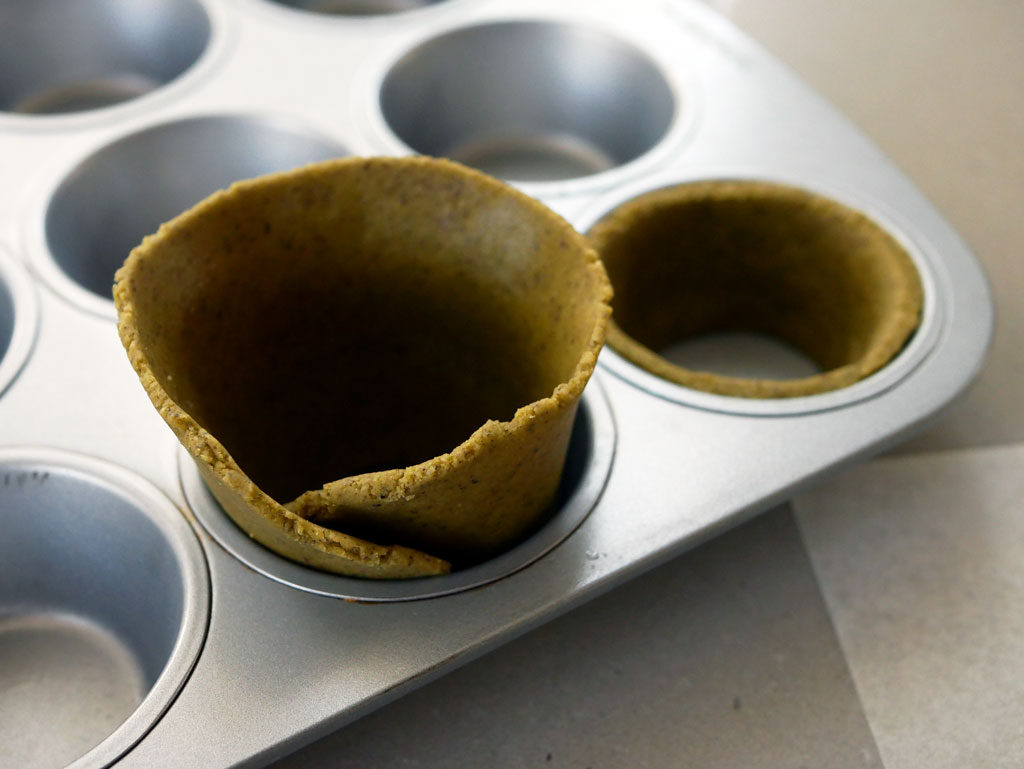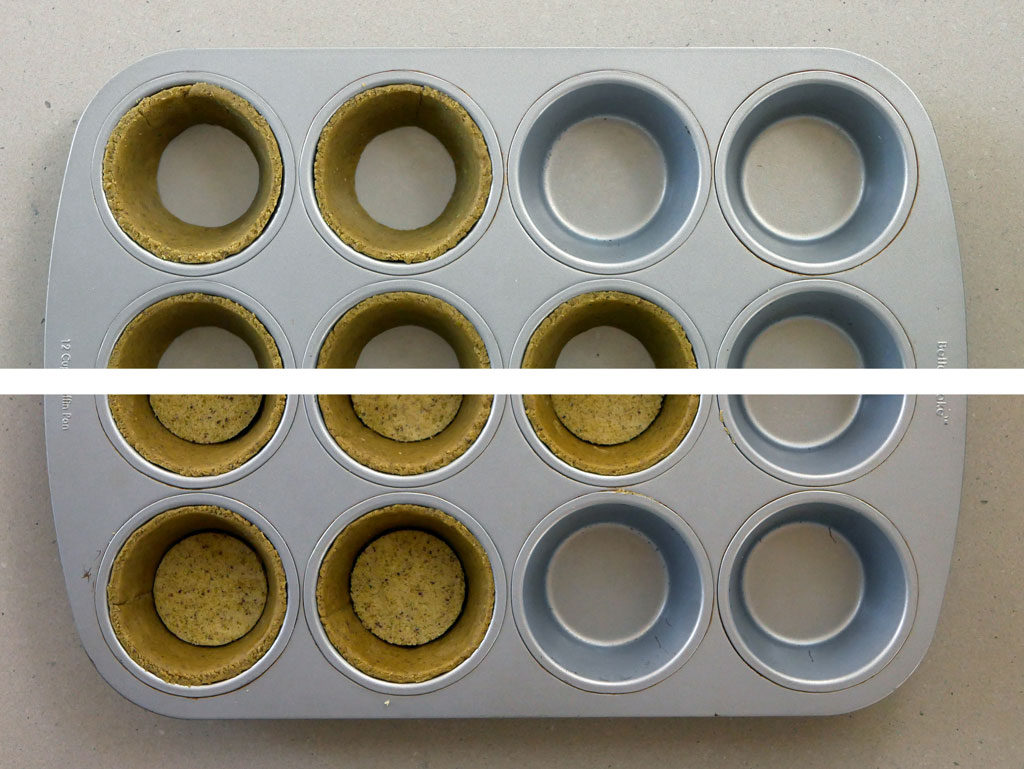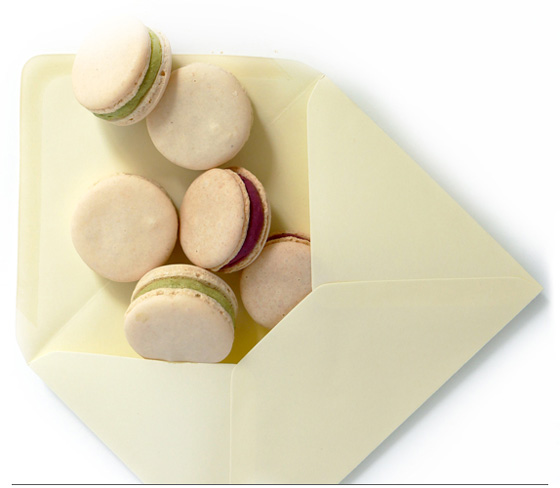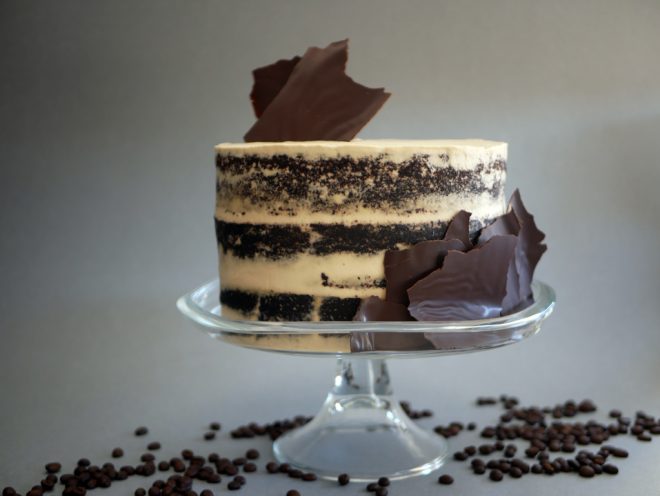Sicilian Cassatina


The pistachios I brought from Bronte in Sicily last summer are just about to end. I bought 4 kilograms that I used in a variety of desserts. I saved the very last pistachios for a special dessert that won my heart (and stomach) at the end of the trip: cassatina. A festive Sicilian cake filled with sweet ricotta cream, covered by green pistachio marzipan and decorated with candied fruits.
I first discovered the cassatina in Noto, in southeastern Sicily. A fairly touristy city compared to the other sleepy towns and cities I visited in the area. The city is full of grandiose baroque style buildings, big churches and colorful stained glass windows in every corner. At evening time, we strolled down the main street and enjoyed a distant Mediterranean sea breeze.
On our way to dinner, we passed by Café Sicilia, an old coffee shop from way back when (1892 to be exact), a family business stretching back four generations. We decided to take a peek. On the right, pastries and sweets sparkled through the display window. On the left was their famous granita, a semi-frozen dessert containing fresh fruit. But what caught my eye was the fancy cassatina.
Cassatina
Cassatina, which is Cassata’s little sister, is a classic Sicilian dessert. Some believe the origin of the name is derivative from the Arabic word quas’at, a round tool used to make the cake. Others say its origin is Latin from the word caseatus, a cheesecake made in form of a pastry. Also, the spherical form of the cassata allegedly has some connection to sun worship in the distant past.
From Noto we drove to Siracusa, where I purchased a couple of Italian baking books. I found a somewhat flaky recipe for the cassata in one of them, written in English and Italian. The English translation looked like the work of Google Translate. For some odd reason, every recipe in the book is accompanied by a (pretty sexist) poem. This is how it goes:
…..
“The cassata is female above all else. Its soft sinuous hips, and the insouciance of her curves. The rainbow of her smiles and joyous vitality. Her voluptuous voice and spiraling fantasies. Snow white, personifying pure values, yet brazen in the flamboyance she offers the world. Her beauty is bewitching yet innocent, her sweetness cloying but irresistible, her appearance baroque yet primeval.
The navel of all desires, sin incarnate.
The mind of all thoughts, sublimation, of every breath.
Mother and spouse, sister and lover.
All things together.
Female.“
…..
Well, the cassata (or cassatina in my case) is a festive cake. It’s usually made from layers of sponge cake, which I replaced with pistachio joconde, and a middle layer of sweet ricotta cream used as a filling for the Sicilian cannoli as well.
The cream is usually full of candied fruits and chocolate chips, but the sweetness around it was enough for me, so I gave up on them. The coolest part: the whole cake is covered by pistachio marzipan (homemade and easy to make, thanks to this recipe).
The cake is usually decorated with a variety of candied fruit peels. I thought to decorate my cassatina with Amarena cherries in syrup, but unfortunately I wasn’t able to find any. I was able however to find raspberries, and lots of them. So I went for it full throttle as you may see in the main image.
I assembled the cassatina using a cupcake pan. I lightly greased the sides of the cups, attached the sticky marzipan to them and went on assembling the cakes. After chilling in the fridge, I passed a knife between the sides of the cups and the marzipan to release the cakes. This part didn’t go as smoothly as I imagined. The knife cut the marzipan in some places and left unaesthetic marks on it.
At first it bothered me so much that I almost gave up on the whole thing. After I tasted the cassatina, it dawned on me that I just have to put up this wonderful recipe on the blog. Maybe covering the cups with plastic wrap before assembling would have helped more. One reader even suggested a silicone cupcake mold (I think it might be genius). For now, I’ll just go take another bite of this insane cassatina.










Ingredients
Pistachio joconde
3 egg whites (90 g)
30 g sugar
70 g shelled pistachios
60 g almond flour
130 g powdered sugar
40 g flour
3 eggs (150 g)
25 butter
Lemon syrup
¼ cup lemon juice
cup sugar
Pistachio marzipan
80 g shelled pistachios
60 g almond flour
120 g brown sugar (demerara)
70 g water
Cheese filling
250 g ricotta cheese
60 g powdered sugar
¼ tsp vanilla paste
Pinch of cinnamon
Zest of half a lemon
Glaze
50 g powdered sugar
1 tsp water
1 tsp lemon juice
Equipment
Cupcake pan *
Pastry bag
Round cookie cutters, 5 cm & 6 cm in diameter
A large offset spatula
brush
* Miriam suggested that a silicone cupcake pan might work better for a safer and cleaner release of the cassatina.
The recipe makes about 7 fancy cassatinas
Cheese filling
Place a fine sieve over a bowl and put the ricotta cheese on it. Keep in the fridge for about three hours to strain the liquids from the ricotta. Remove from the fridge and get rid of the liquids. Using a spatula, strain the ricotta itself through the sieve to get a smoother texture.
Add powdered sugar, vanilla, cinnamon and lemon zest to the ricotta. Mix well with a whisk. Fill a pastry bag with the cheese filling. Keep it in the fridge until use.
Lemon Syrup
Pour lemon juice into a small pot. Add sugar. Place on high heat. Stir the sugar with a spatula to dissolve it. Once the water starts to boil, stop stirring, remove the spatula and lower the flame. Let the syrup simmer for another 10 minutes. Remove from heat. Allow the syrup to cool in room temperature.
Pistachio joconde
Put pistachios, almond flour and powdered sugar in a food processor. Grind into a powder. Sift the mixture into a bowl. Grind the remaining chunks and sift them as well. Sift the flour into the mixture. Add eggs and mix just until uniform. Keep aside.
Preheat the oven to 180 °C (350 °F).
French meringue: In a stand mixer, whip the egg whites on medium speed until thick white foam is formed. Keep whipping on the same speed and add sugar gradually. Once all the sugar has been added, increase the speed to high and whip until soft peaks.
Melt the butter carefully on low heat or in a microwave. Transfer a bit from the egg/powder mixture to the melted butter and mix. Put it back in the bowl and mix well. Fold the meringue into the mixture in 3 parts.
Line a baking tray with parchment paper or Silpat (use a tray with rims to avoid the batter from spilling). Pour the batter in the center of the tray. Flatten the surface uniformly using a large offset spatula. Tap the bottom of the baking tray to release air bubbles.
Place the tray in the oven and bake for about 10-12 minutes. The joconde is ready when it browns and is stable to the touch. Remove from oven. Let it cool at room temperature. Once cooled, keep in the fridge for about half an hour to an hour.
Pistachio marzipan
Grind pistachios and almond flour in a small and powerful food processor. Scrape the sides occasionally and keep grinding until you get a paste.
Put water in a saucepan. Add sugar. Place on high heat. Stir the sugar with a spatula to dissolve it. Once the water starts to boil, stop stirring, remove the spatula and lower the flame. Let the syrup simmer until the temperature reaches 115 °C / 240 °F (about 15 minutes). Careful, towards the end the syrup might overflow.
Remove the syrup from heat. Add the pistachio mixture to the syrup. Mix well until you get a thick smooth cream. Pour the cream on a parchment paper. Let it cool at room temperature for about 10 minutes.
While the mixture is still warm, knead it just a little bit and form it into a ball. Cover in plastic wrap until use.
Putting it all together!
Lightly grease the cups of the pan. Cut a piece of marzipan. Using a rolling pin, roll out the marzipan to a strip a little wider and longer than the cup’s diameter (about 4 mm thick). Cut a straight line at the bottom edge of the marzipan. Stick the marzipan strip to the cup’s sides, attach the edges together and cut all the extras.
Remove the joconde from the fridge. Using the cookie cutters, cut 7 small circles and 7 big circles from the joconde. Place a small circle in each cup, push it down a bit to attach it to the marzipan sides and straighten it. Using a brush, soak the joconde circle with a bit of lemon syrup.
Remove the cheese filling from the fridge. Cut a small opening at the edge of the pastry bag (about 1 cm). Pipe the filling in the cups up to 2/3 of their height. Place a big joconde circle on top of the filling and push it down just a bit. Make sure all the cups are filled to the top. Again, soak the joconde circle with a bit of lemon syrup.
Keep the pan in the fridge to let the filing set for a few good hours (or even overnight) before releasing from the pan. Once it’s time to release, go over the sides of each cassatina with a small sharp knife to release the marzipan sticking to the pan. Flip over the pan and release the cassatinas.
Glaze
Mix powdered sugar, water and lemon juice together until you get a thick white glaze. Using a spoon, glaze the top of each cassatina. Keep in the fridge for at least an hour to let the glaze set. Decorate each cassatina with raspberries (or any other fresh/candied fruit) and serve with a smile.

Related Posts
Leave a reply:Cancel reply

Search the blog
![]()
Get updates by email












